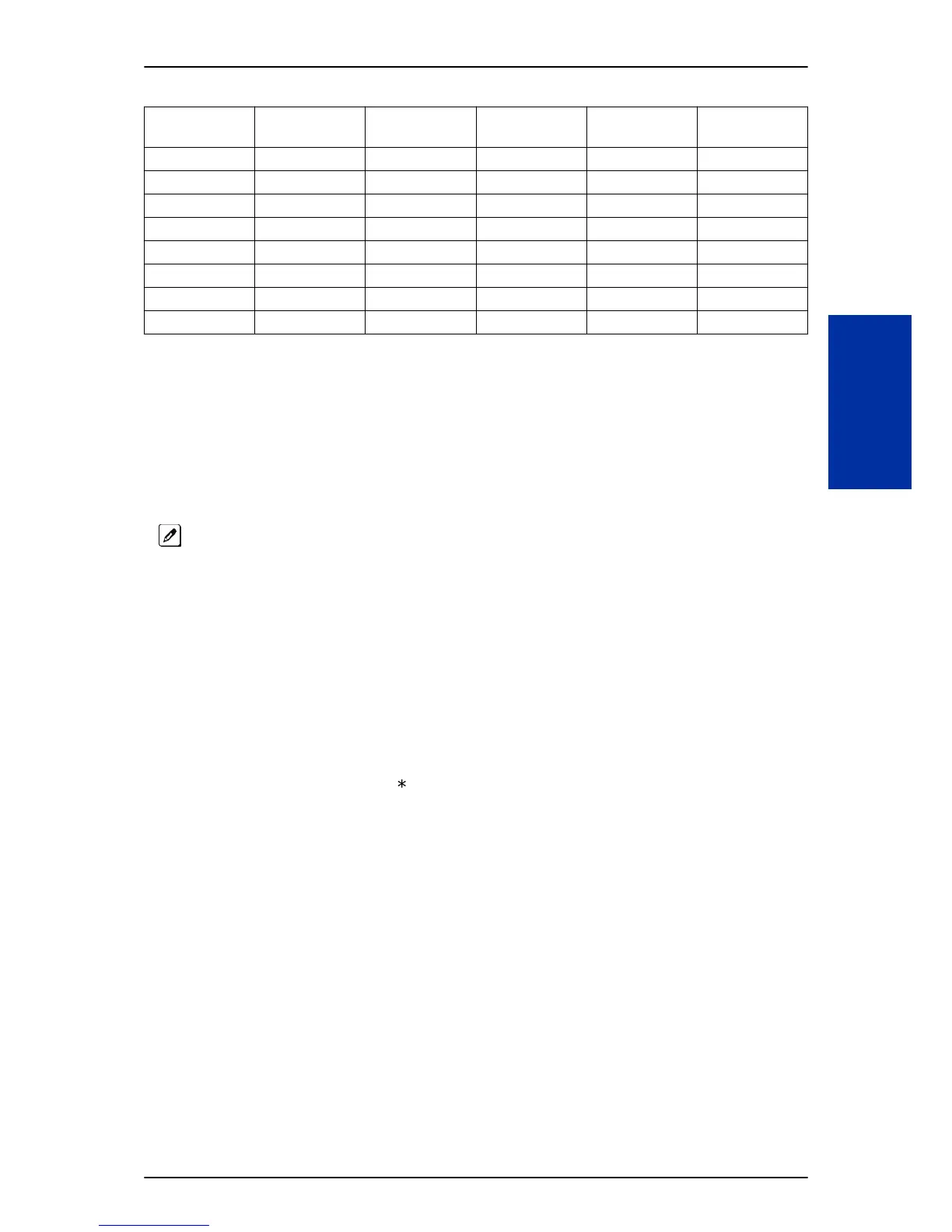Codec Packet Size Bandwidth
Used
Codec Packet Size Bandwidth
Used
G.711 10 ms 110.4 kbps G.729 10 ms 54.4 kbps
G.711 20 ms 87.2 kbps G.729 20 ms 31.2 kbps
G.711 30 ms 79.5 kbps G.729 30 ms 23.5 kbps
G.711 40 ms 75.6 kbps G.729 40 ms 19.6 kbps
G.722 10 ms 110.4 kbps G.729 50 ms 17.3 kbps
G.722 20 ms 87.2 kbps G.729 60 ms 15.7 kbps
G.722 30 ms 79.5 kbps G.723 30 ms 20.8 kbps
G.722 40 ms 75.6 kbps G.723 60 ms 13.2 kbps
For example, if one site plans on making a maximum of 16 calls across the network using G.729 with
a 30 ms packet size, there must be a minimum of 376 kbps available for voice traffic. The QOS policy
for this network should allow for 376 kbps to be set aside for voice prioritization.
Conditions
• CPU software 1500 (1.50) or higher is required.
• A maximum of five nodes and a total of 168 ports total throughout the network.
InMail ports do not count against the 168 port capacity.
• This feature is only supported when networked with another SL1100; no other system types are
available.
• Each system must be individually licensed for this feature with the following license: SL-SYS-SL-
NET-LIC.
• Each system requires a VoIPDB.
• Each site must have different extension numbers assigned. The same extension number cannot
exist at multiple sites.
• Call redirect is not supported with SL Net networking.
• Dual Hold across the network is not supported.
• If calls across SL Net are to follow the local ARS routing, all sites must use ARS routing.
• SL Net is not supported through NAT.
• A Trunk Access via Networking key (
06) will not light up when all trunks in the Remote site trunk
group are busy. If a user tries to access a trunk, when they are al busy, the word "Busy" will be in
the display and the user will hear Busy Tone but the key will not light up.
• Camp On across SL Net is only supported to a Busy extension.
• Hold, Transfer, and Park recall timers will follow the timer of the system where the call is on hold
(Trunk and Station). For example, a user in Site A calls a user in Site B. Site B answers the call and
places the call on hold. The hold recall time is based on Site A because the call on hold is in Site A
and not site B.
• The allowing or denying of Class of Service features in an SL Network must be performed network
wide. For example, if users in Class of Service 1 at site 1 want to block the Camp On feature a
change will have to be made in Class of Service 1 of all systems in the network.
• Paging to a networked system can only be activated by dialing a service code and the target
network's system ID.
• When a terminal or trunk is placed on hold, the Music on Hold comes from the system where the
terminal or trunk resides.
• When the Hold recall times out, the call will recall to the operator in the system where the CO trunk
resides. Hold recall timeout to the operator is controlled in Class of Service program 20-11-13.
• Forced Account Codes are not applied to calls across SL Net.
ISSUE 2.0
SL1100
Features and Specifications Manual 1-681
S

